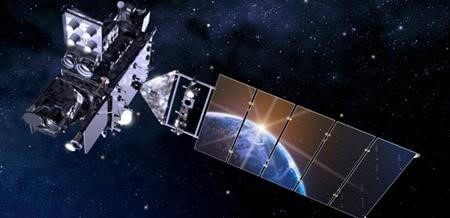PRESS RELEASE
For Immediate
Release:
For more information:
Kristen Lovejoy
Marketing Manager
(800) 828-8840
klovejoy@pcb.com
PCB Accelerometers Successfully Operating after 6 years on the GOES-R Series Weather Satellites
PCB celebrates success after 6 years on board the Geostationary Operational Environmental Satellites - R Series
March 29, 2023 - Depew, NY - In 2016, PCB® Piezotronics, Inc., supplied Lockheed Martin with accelerometers for use on NOAA's GOES-16 weather satellite. These accelerometers are still successfully operating after 6 years under cosmic radiation conditions.
GOES-16 was the first of four Geostationary Operational Environmental Satellites-R Series (GOES-R) next-generation weather satellites. The advanced spacecraft and instrument technology used on the GOES-R series has resulted in more timely and accurate forecasts and warnings. It improves support for detecting and observing meteorological phenomena impacting public safety, property protection, and economic health and development.
The GOES-R series spacecraft bus is three-axis stabilized and designed for 10 years of on-orbit operation preceded by up to five years of on-orbit storage. The satellites operate through periodic station-keeping and momentum adjustment maneuvers, which allow for near-continuous instrument observations. Other notable performance elements include vibration isolation for the Earth-pointed optical bench and high-speed spacecraft-to-instrument interfaces designed to maximize science data collection. The GOES-R series requirements call for the cumulative interruption time from all momentum management, station-keeping, and yaw flip maneuvers to be less than 120 minutes per year. This is nearly two orders of magnitude improvement compared to the previous GOES satellites.
The spacecraft carries three classifications of instruments: nadir-pointing, solar-pointing, and in-situ. The GOES-R nadir-pointing instruments include the Advanced Baseline Imager (ABI) and the Geostationary Lightning Mapper (GLM). These two instruments are Earth-pointing and are located on a highly stable, precision pointed platform that is dynamically isolated from the rest of the spacecraft. PCB's accelerometers were used by Lockheed Martin to measure the dynamic environment of the instrument platform in flight, and to characterize that environment to improve the interpretation of instrument data.
PCB® engineers supported Lockheed Martin's efforts during the design and build phase of the Model 393M90 accelerometer to meet the GOES-R satellite program requirements. Throughout this program, PCB® and Lockheed Martin engineers worked as a team to ensure PCB® Model 393M90 can withstand the harsh environment during and after satellite launch.
The GOES-16 spacecraft ushered in a new era of Earth and space weather observation for the United States. GOES-17 launched in 2018 and GOES-18 launched in March of 2022, both also utilizing PCB accelerometers. The last of the series, GOES-U (to be named GOES-19 once it reaches geostationary orbit), is currently set to launch in April 2024.

GOES-R illustration courtesy of Lockheed Martin
About PCB Piezotronics
PCB manufactures vibration, pressure, force and strain, shock, and acoustic sensors used by design engineers and predictive maintenance professionals worldwide for test, measurement, monitoring, and control requirements. Our sensors support testing in aerospace and defense, automotive, transportation, civil engineering, and general R&D industries. Primary sensing technologies include piezoelectric (ICP®), piezoresistive, and capacitive MEMS. With a worldwide customer support team, 24-hour SensorLine, and a global distribution network, PCB is committed to Total Customer Satisfaction. PCB Piezotronics is a wholly-owned subsidiary of Amphenol Corporation. More info at www.pcb.com